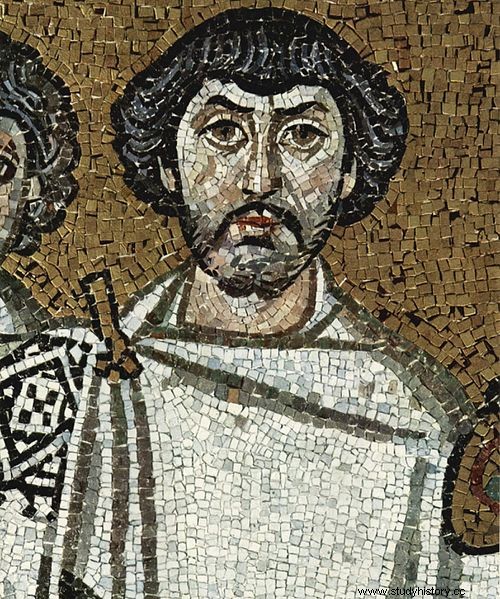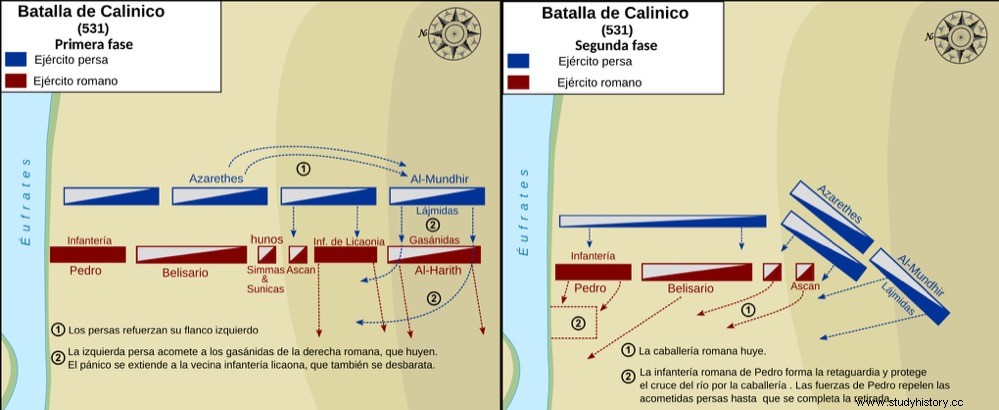Some time ago we published an article on the size of armies throughout history, with a comparison made by the Slovakian cartographer Martin Vargic where it can be seen that, apart from the Chinese case, the number of combatants reached its peak around the year 500 BC and then it was progressively decreasing, to increase again from the XIX century.
Since ancient times, since the armies of Sargon of Akkad had several thousand troops, it was difficult to keep track of the total number of soldiers, much more than battle casualties.
Classical sources often contradict each other when reporting figures, exaggerating or minimizing them according to interest, but also because there were no reliable records to refer to. In fact, until the 19th century, armies did not have effective methods to carry out these calculations.

On April 19, 531 AD. They faced each other on the banks of the Euphrates, near present-day Ar-Raqqah in Syria, two numerically quite equal forces (about 20,000 men on each side). On the one hand the Byzantine troops under the command of Belisario, and on the other those of the Sasánida empire led by Azaretes. The clash is known as the Battle of Calinico and it would be one of the many in which the two powers would face each other.
It all started in the year 527, when the Sassanid Persian king Cabades (Kavad I) tried to take control of Caucasian Iberia by forcing its inhabitants to convert to Zoroastrianism. The Byzantine emperor Justinian I sent his armies under the command of his best generals, Sittas and Belisarius, against the Persians. The encounters followed one another, with alternating victories for each side and, after a brief truce and negotiations that did not bear fruit, the Persians decided to strike the final blow.

Kabades's army entrenched itself at Nisibis (present-day Nusaybin in southeastern Turkey) while Azaretes's cavalry marched up the Euphrates to rampage through Syria to take Antioch. But Belisarius cut Azarates off and pursued him to Assyria, meeting him at Calinico.
The battle was a disaster for the Byzantines, mainly due to the flight of their Ghassanid allies. Only the night saved them, when Belisarius ordered the survivors to swim across the river to an islet where they were picked up by ships.
With Belisarius in battle was his assistant and his historian Procopius of Caesarea, to whom he was a witness, and whose works are the main source of information on Justinian's reign. In his History of Wars he relates the battle and says:
What had happened? Very easy. Azaretes had won the battle, but had failed to conquer any cities or fortresses. Furthermore, Persian casualties had been so heavy that Azaretes was relieved of command.

And how could Cabades know how many soldiers had fallen? Procopius' account gives us the clue. Before each battle, the entire Persian army paraded one by one in front of the king, and each man deposited an arrow or other weapon in the baskets provided for this purpose.
Returning from battle, the process was repeated, each man taking one of the weapons from the baskets. Those left uncollected were counted, so they knew exactly how many men they had lost.

As for Azaretes, Chosroes I, son and successor of Cabades, restored him to command and Procopius tells how he participated in the siege of Edessa in the year 544:
Procopius himself, who survived the battle of Callinicus, would later accompany Belisarius in the conquest of Carthage from the Vandals in AD 533, and in the campaign against the Ostrogothic kingdom of Italy in 537. In his chronicle of the war against the Vandals wrote in 536 AD:
He was referring to the weather phenomena known today as the Little Ice Age of Late Antiquity , which occurred between 535-536 AD. caused by a large volcanic eruption in the tropics or by a meteorite impact.
